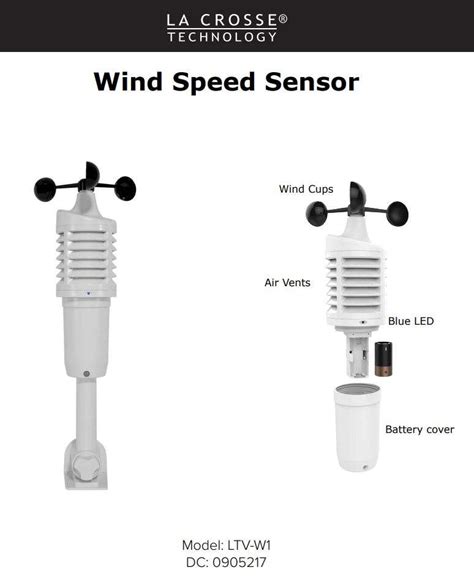LTV-W1 for La Crosse: A Simple Installation Tutorial
The La Crosse Technology LTV-W1 wireless temperature and humidity sensor is a popular choice for expanding the capabilities of your La Crosse weather station. This guide provides a straightforward, step-by-step tutorial on how to install the LTV-W1, ensuring a seamless integration into your existing system. We'll cover everything from initial setup to troubleshooting common issues, helping you get accurate readings in no time.
What You'll Need:
Before you begin, ensure you have the following items:
- La Crosse Technology LTV-W1 Wireless Sensor: This is the star of the show!
- La Crosse Weather Station (compatible model): Check your weather station's manual to confirm compatibility. Not all La Crosse stations are compatible with the LTV-W1.
- Batteries (usually AAA): Refer to the LTV-W1's instructions for the correct battery type and quantity.
- Screwdriver (if wall mounting): This is optional, depending on your preferred installation method.
Step-by-Step Installation Guide:
1. Inserting the Batteries:
Carefully open the battery compartment on the back of the LTV-W1 sensor. Insert the batteries, ensuring correct polarity (+ and -). Refer to the diagram inside the battery compartment if needed. Close the battery compartment securely.
2. Registering the Sensor with Your Weather Station:
This step varies slightly depending on your specific La Crosse weather station model. Consult your weather station's user manual for detailed instructions on adding a new sensor. Generally, the process involves:
- Entering the "Add Sensor" or "Register Sensor" mode: This is often done through a specific button sequence on your weather station's console.
- Waiting for the station to recognize the sensor: The LTV-W1 will transmit its signal, and your weather station will display a confirmation message upon successful registration. This may take a few minutes.
3. Placing the Sensor:
Optimal placement is crucial for accurate readings. Consider these factors:
- Avoid direct sunlight: Direct sunlight can significantly affect temperature readings.
- Keep away from heat sources: Radiators, ovens, and other heat sources can skew your temperature data.
- Ensure good ventilation: Proper airflow is important for accurate humidity readings. Avoid placing the sensor in enclosed spaces or areas with poor air circulation.
- Choose a representative location: Position the sensor in a location that accurately reflects the typical temperature and humidity of the area you want to monitor.
4. Wall Mounting (Optional):
If you prefer a wall-mounted installation, use the screw holes on the back of the LTV-W1. Securely mount the sensor to the wall using appropriate screws (not included).
Troubleshooting Common Issues:
The Weather Station Doesn't Recognize the Sensor:
- Check battery installation: Make sure the batteries are correctly inserted and have sufficient charge.
- Check the distance: Ensure the sensor is within the operational range of your weather station.
- Check for obstructions: Large objects or walls can interfere with the wireless signal.
- Try restarting both the sensor and weather station: Removing and re-inserting the batteries in the sensor, and unplugging the weather station for a few minutes, can often resolve minor glitches.
- Check for interference: Other electronic devices might interfere with the signal. Try relocating the sensor or weather station.
Inaccurate Readings:
- Recheck sensor placement: Ensure the sensor is placed according to the recommendations above.
- Calibrate the sensor: Some La Crosse weather stations allow for sensor calibration. Consult your manual for instructions.
Frequently Asked Questions (FAQs):
How far can the LTV-W1 sensor be placed from the weather station?
The range varies depending on environmental factors, but generally, the LTV-W1 should be within 100-300 feet (30-90 meters) of the main console for reliable readings. Obstructions will significantly reduce this range.
What types of batteries does the LTV-W1 use?
Typically, the LTV-W1 utilizes AAA batteries. Always consult the device's manual for confirmation.
My weather station shows an "error" message. What should I do?
Refer to your weather station's user manual for troubleshooting specific error codes. Common causes include low battery levels, signal interference, or sensor malfunctions.
Can I use the LTV-W1 with other brands of weather stations?
No, the LTV-W1 is specifically designed for use with compatible La Crosse Technology weather stations.
By following these steps and addressing potential issues, you can successfully install your La Crosse Technology LTV-W1 and enjoy accurate temperature and humidity readings from your weather station. Remember to consult your specific weather station and sensor manuals for detailed instructions and troubleshooting guidance.

